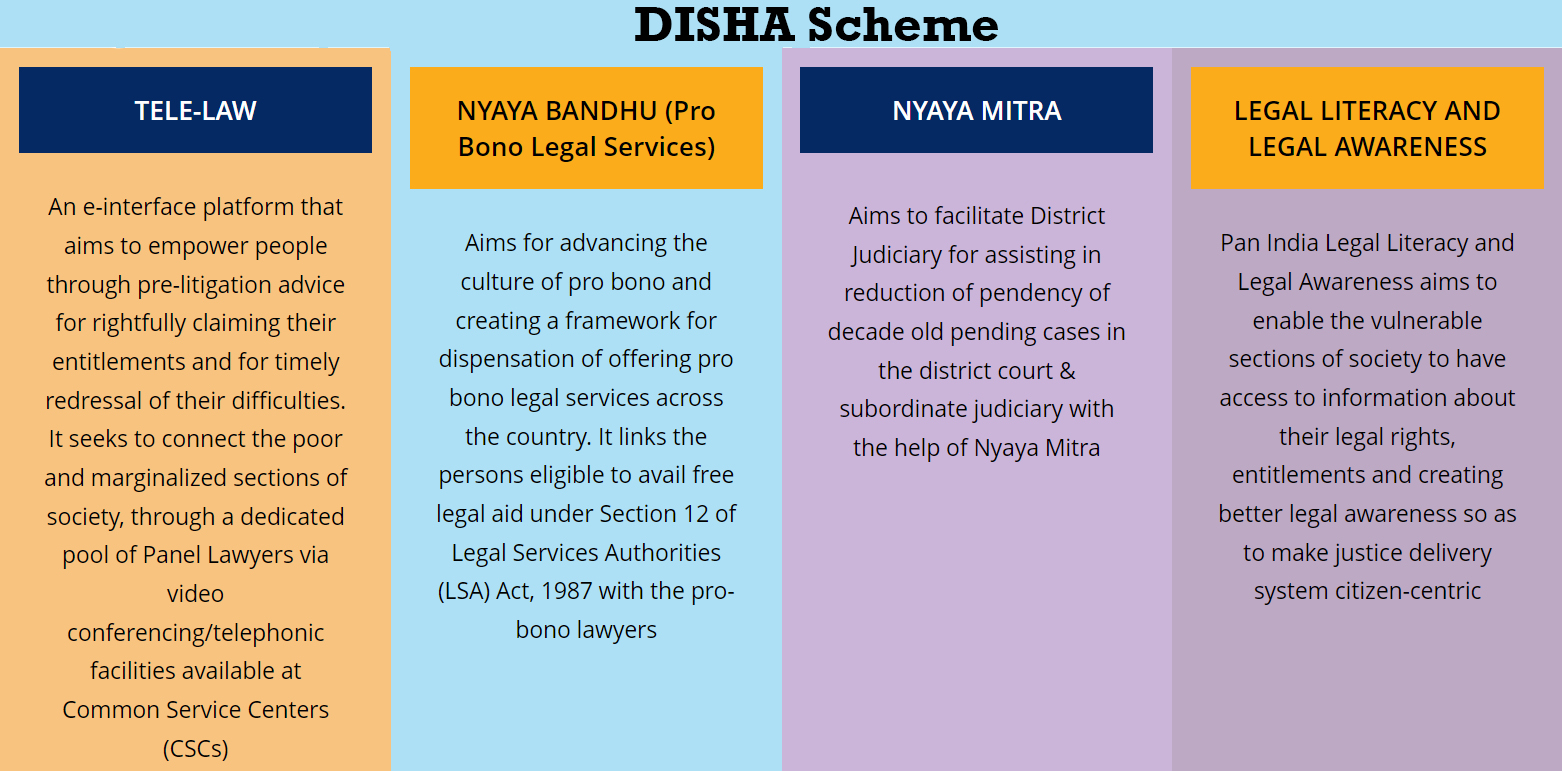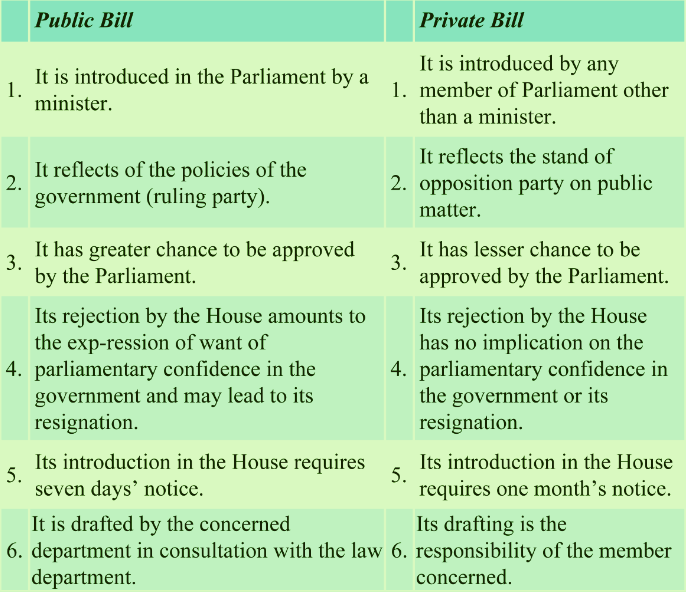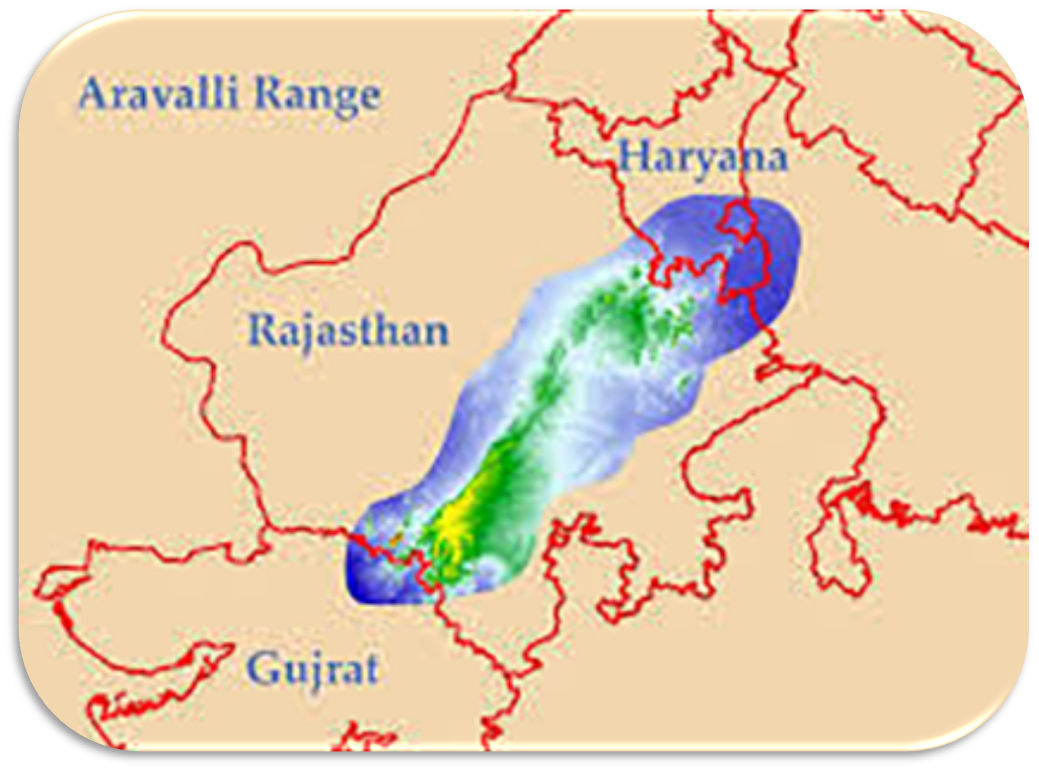Infographics
Indian Economy
Strengthening Pharmaceuticals Industry
For Prelims: Strengthening of Pharmaceutical Industry Scheme, Active Pharmaceutical Ingredients
For Mains: Indian pharmaceutical industry, health, government policies and interventions
Why in News?
The Ministry of Chemicals & Fertilisers has launched Schemes for 'Strengthening Pharmaceuticals Industry' (SPI) keeping in view the strategic role of MSMEs (Micro, Small and Medium Enterprises).
What are the Key Points?
- About:
- The Scheme provides for credit linked capital and interest subsidy for Technology Upgradation of MSME units in pharmaceutical sector, as well as support of up to Rs 20 crore each for common facilities including Research centre, testing labs and ETPs (Effluent Treatment Plant) in Pharma Clusters.
- The MSME unit will have the option to choose from either Capital subsidy or Interest subvention.
- SIDBI (Small Industries Development Bank of India) is the Project management Consultant for implementing the scheme.
- Components:
- Pharmaceutical Technology Upgradation Assistance Scheme (PTUAS):
- It will facilitate pharmaceutical MSMEs with proven track records to upgrade their technology.
- It has provisions for a capital subsidy of 10 % on loans up to a maximum limit of Rs 10 crore with a minimum repayment period of three years or interest subvention of up to 5 % (6 % in case of units owned by SC/ST) on reducing balance basis.
- Assistance to Pharma Industries for Common Facilities Scheme (API-CF):
- It will strengthen the existing pharmaceutical clusters' capacity for sustained growth.
- It provides for an assistance of up to 70 % of the approved project cost or Rs 20 crore, whichever is less.
- In case of Himalayan and north-east region, the grant-in-aid would be Rs 20 crore per cluster or 90 % of the project cost, whichever is less.
- Pharmaceutical and Medical Devices Promotion and Development Scheme (PMPDS):
- It will involve preparation of study reports on topics of importance for the Indian pharma and medical device industry.
- The scheme is aimed at creating a database of pharma and medical device sectors.
- Pharmaceutical Technology Upgradation Assistance Scheme (PTUAS):
- Objectives:
- Aimed at enhancing India’s capabilities in the pharmaceuticals sector with an objective to make it much more competitive in terms of both quality and cost and also aimed at making Indian pharma MSMEs, a part of Global supply chain.
What is the Significance?
- It will strengthen the existing infrastructure facilities and will make India a global leader in the Pharma Sector.
- This will not only improve the quality but also ensure the sustainable growth of clusters.
- The scheme will address the rising demand in terms of support required to existing Pharma clusters and MSMEs across the country to improve their productivity, quality and sustainability.
- Schemes will increase investment, encourage research and innovation and enable the industry to develop futuristic products and ideas.
What are the Schemes Related to the Pharma Sector?
- Promotion of Bulk Drug Parks Scheme:
- The government aims to develop 3 mega Bulk Drug parks in India in partnership with States to reduce manufacturing cost of bulk drugs in the country and dependency on other countries for bulk drugs.
- The scheme will also help in providing continuous supply of drugs and ensure delivery of affordable healthcare to the citizens.
- Production Linked Incentive (PLI) Scheme:
- The PLI scheme aims to promote domestic manufacturing of critical Key Starting Materials (KSMs)/Drug Intermediates and Active Pharmaceutical Ingredients (APIs) in the country.
UPSC Civil Services Examination, Previous Year Questions (PYQ)
Q. How is the Government of India protecting traditional knowledge of medicine from patenting by pharmaceutical companies? (2019)
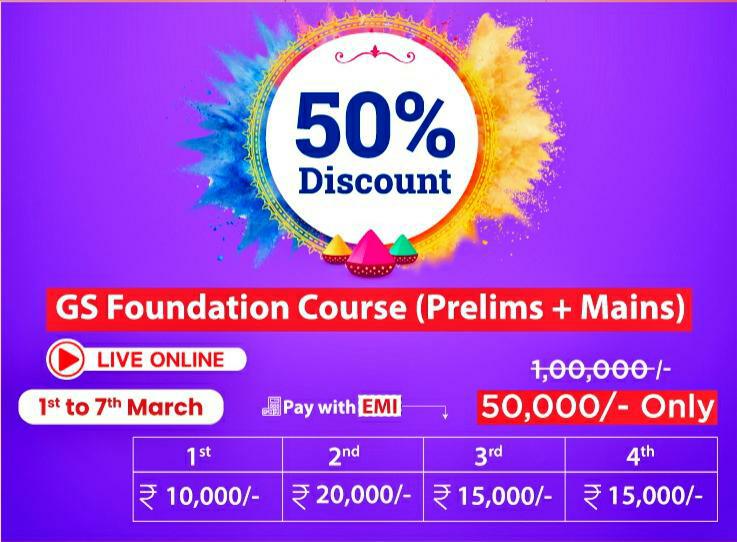
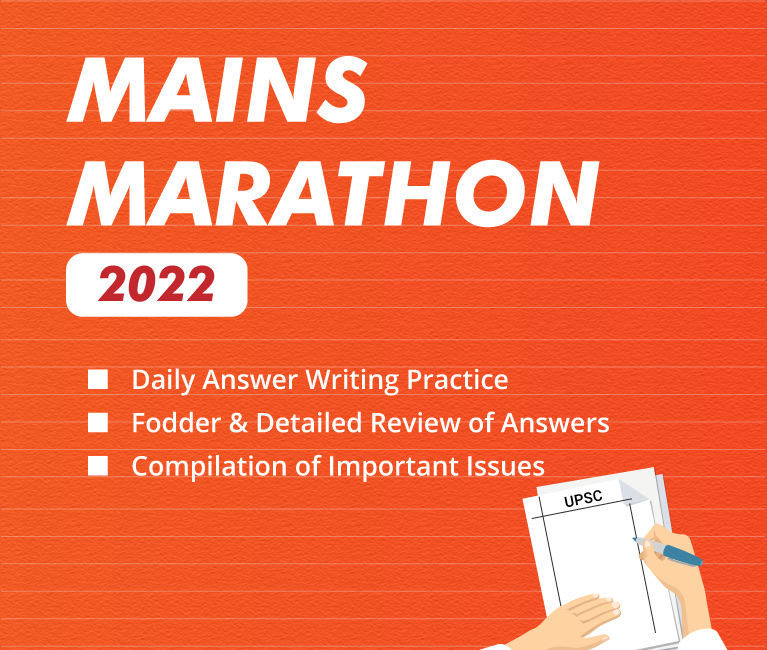
Indian Polity
National Legal Services Authority
For Prelims: Legal Services Authorities Act of 1987, Lok Adalat, Article 39, Supreme Court
For Mains: National Legal Services Authority
Why in News?
Recently, the Minister of Law and Justice informed the details of funds allocated by NALSA (National Legal Services Authority) to Legal Services Authorities to organise Legal Aid Programmes in India.
What is NALSA?
- About:
- The NALSA was founded in 1995 under the Legal Services Authorities Act of 1987 to monitor and review the effectiveness of legal aid programs and to develop rules and principles for providing legal services under the Act.
- It also distributes funding and grants to state legal services authorities and non-profit organisations to help them execute legal aid systems and initiatives.
- Constitutional Provisions:
- Article 39A of the Constitution of India provides that State shall secure that the operation of the legal system promotes justice on a basis of equal opportunity, and shall in particular, provide free legal aid, by suitable legislation or schemes or in any other way, to ensure that opportunities for securing justice are not denied to any citizen by reason of economic or other disability.
- Articles 14 and 22(1) also make it obligatory for the State to ensure equality before law and a legal system which promotes justice on a basis of equal opportunity to all.
- Objectives of Legal Services Authorities:
- Provide free legal aid and advice.
- Spread legal awareness.
- Organise lok adalats.
- Promote settlements of disputes through Alternative Dispute Resolution (ADR) Mechanisms. Various kinds of ADR mechanisms are Arbitration, Conciliation, Judicial settlement including settlement through Lok Adalat, or Mediation.
- Provide compensation to victims of crime.
What are Legal Services Institutions at Various Levels?
- National Level: NALSA was constituted under the Legal Services Authorities Act, 1987. The Chief Justice of India is the Patron-in-Chief.
- State Level: State Legal Services Authority. It is headed by the Chief Justice of the State High Court who is its Patron-in-Chief.
- District Level: District Legal Services Authority. The District Judge of the District is its ex-officio Chairman.
- Taluka/Sub-Division Level: Taluka/ Sub-Divisional Legal Services Committee. It is headed by a senior Civil Judge.
- High Court: High Court Legal Services Committee
- Supreme Court: Supreme Court Legal Services Committee
Who is Eligible for Getting Free Legal Services?
- Women and children
- Members of SC/ST
- Industrial workmen
- Victims of mass disaster, violence, flood, drought, earthquake, industrial disaster.
- Disabled persons
- Persons in custody
- Those persons who have annual income of less than the amount prescribed by the respective State Government, if the case is before any court other than the Supreme Court, and less than Rs. 5 Lakhs, if the case is before the Supreme Court.
- Victims of Trafficking in Human beings or begar.
What are the Related Initiatives?
- Legal Service Mobile App:
- To enable equitable access to justice, NALSA has launched Legal Services Mobile App on Android and iOS versions to enable easy access to legal aid to common citizens.
- DISHA Scheme:
- Department of Justice (DoJ) has launched comprehensive, holistic, integrated and systemic solution on access to justice at pan India level through a scheme titled “Designing Innovative Solutions for Holistic Access to Justice (DISHA)” being implemented from 2021-26.
- All the Access to Justice Programmes have been merged under DISHA scheme and upscaled to all India level.
UPSC Civil Services Examination, Previous Year Questions (PYQ)
Q. With reference to National Legal Services Authority, consider the following statements: (2013)
- Its objective is to provide free and competent legal services to the weaker sections of the society on the basis of equal opportunity.
- It issues guidelines for the State Legal Services Authorities to implement the legal programmes and schemes throughout the country.
Which of the statements given above is/are correct?
(a) 1 only
(b) 2 only
(c) Both 1 and 2
(d) Neither 1 nor 2
Ans: (c)

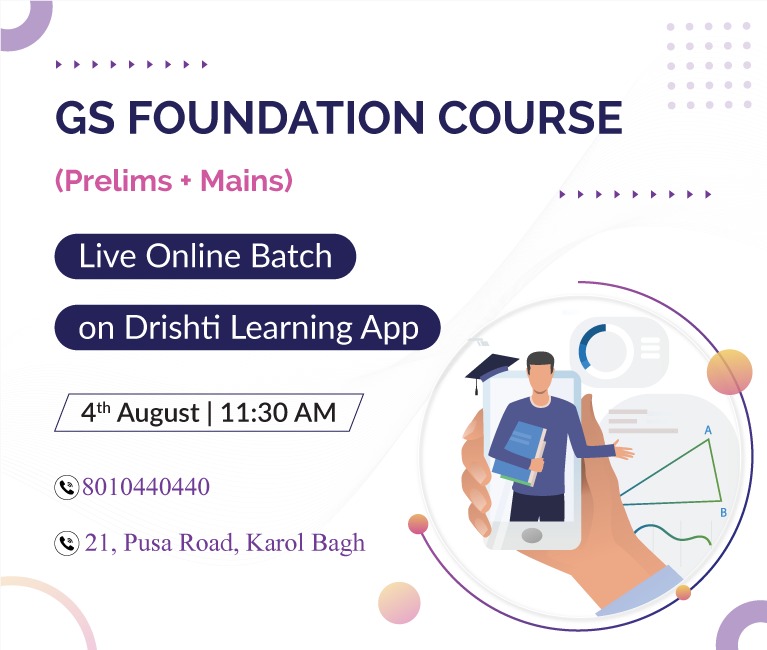
Governance
Right to Health
For Prelims: Right to Health, Seventh Schedule, Private Bill, Public Bill
For Mains: Significance of Health Sector in an Economy, Challenges in achieving inclusive health, Government initiatives
Why in News?
Recently, there was an intense discussion on a Private Member’s Bill — The Right to Health Bill in Rajya Sabha.
- The goal is to attain the highest possible level of health and well-being for all at all ages, through a preventive and promotive health care orientation in all developmental policies.
- The Bill seeks to make health a fundamental right to all citizens and ensure equitable access and maintenance of a standard of physical and mental health conducive to living a life in dignity.
What do we know about Right to Health?
- About:
- The Right to health, as with other rights, includes both freedoms and entitlements:
- Freedoms include the right to control one’s health and body (for example, sexual and reproductive rights) and to be free from interference (for example, free from torture and non-consensual medical treatment and experimentation).
- Entitlements include the right to a system of health protection that gives everyone an equal opportunity to enjoy the highest attainable level of health.
- The Right to health, as with other rights, includes both freedoms and entitlements:
- Related Provisions in India:
- International Conventions:
- India is a signatory of the Article 25 of the Universal Declaration of Human Rights (1948) by the United Nations that grants the right to a standard of living adequate for the health and well-being to humans including food, clothing, housing and medical care and necessary social services.
- Fundamental Rights:
- Article 21 of the Constitution of India guarantees a fundamental right to life & personal liberty.
- The right to health is inherent to a life with dignity.
- Article 21 of the Constitution of India guarantees a fundamental right to life & personal liberty.
- Directive Principles of State Policy (DPSP):
- Articles 38, 39, 42, 43, & 47 (DPSP) put the obligation on the state in order to ensure the effective realization of the right to health.
- Judicial Pronouncements:
- The Supreme Court in Paschim Bangal Khet Mazdoor Samity case (1996) held that in a welfare state, the primary duty of the government is to secure the welfare of the people and moreover it is the obligation of the government to provide adequate medical facilities for its people.
- Also, in its landmark judgment in Parmanand Katara Vs Union Of India (1989), Supreme Court had ruled that every doctor whether at a government hospital or otherwise has the professional obligation to extend his services with due expertise for protecting life.
- International Conventions:
- Significance:
- Right Based Healthcare Services:
- The people are entitled to the right to health and it puts a compulsion for the government to take steps toward this.
- Wide Access to Health Services:
- Enables everyone to access the services and ensures that the quality of those services is good enough to improve the health of the people who receive them.
- Reduce Out of Pocket Expenditure:
- Protects people from the financial consequences of paying for health services out of their own pockets and reduces the risk of people getting pushed into poverty.
- Right Based Healthcare Services:
What are the Challenges in the Health Sector?
- Lack of Primary Healthcare Services:
- The existing public primary health care model in the country is limited in scope.
- Even where there is a well-functioning public primary health centre, only services related to pregnancy care, limited childcare and certain services related to national health programmes are provided.
- Inadequate Funding:
- Expenditure on public health funding has been consistently low in India (approximately 1.3% of GDP).
- As per OECD, India's total out-of-pocket expenditure is around 2.3% of GDP.
- Sub-optimal Public Health System:
- Due to this, it is challenging to tackle Non-communicable Diseases, which is all about prevention and early detection.
- It diminishes preparedness and effective management for new and emerging threats such as pandemic like Covid-19.
Way Forward
- More Funding:
- Public funding on health should be increased to at least 2.5% of GDP as envisaged in the National Health Policy, 2017.
- A comprehensive public health legislation incorporating the right to health may be passed by the Parliament.
- Creating a Nodal Health Agency:
- There is a need to create a designated and autonomous agency to perform the functions of disease surveillance, information gathering on the health impact of policies of key non-health departments, maintenance of national health statistics, enforcement of public health regulations, and dissemination of information to the public.
- Other Measures:
- The health should be shifted to the Concurrent list of the seventh schedule under the Constitution. Presently, ‘Health’ is under the State List.
- There is a need for a Developmental Finance Institution (DFI) dedicated to healthcare investments.
What is the Difference between Private Member Bill & Public Bill?
UPSC Civil Services Examination, Previous Year Questions (PYQ)
Prelims
Q. With reference to the Parliament of India, consider the following statements: (2017)
- A private member’s bill is a bill presented by a Member of Parliament who is not elected but only nominated by the President of India.
- Recently, a private member’s bill has been passed in the Parliament of India for the first time in its history.
Which of the statements given above is/are correct?
(a) 1 only
(b) 2 only
(c) Both 1 and 2
(d) Neither 1 nor 2
Ans: (d)
Explanation:
- The process of law making begins with the introduction of a Bill in either House of Parliament.
- A Bill can be introduced either by a Minister or a member other than a Minister. In the former case, it is called a Government Bill and in the latter case, it is known as a Private Member’s Bill.
- In other words, a Private Member’s Bill is introduced by any member (elected or nominated) of Parliament other than a minister. One month’s notice period is required prior to its introduction. Drafting is the sole responsibility of the member who introduces the bill. Hence, statement 1 is not correct.
- The first Private Member’s Bill passed by parliament was the Muslim Wakfs Bill, 1952, which aimed at providing better governance and administration of Wakfs. It was passed in 1954. Hence, statement 2 is not correct.
- The Rights of Transgender Persons Bill, 2014, passed by the Rajya Sabha in 2015 became the first private member’s bill to get the Rajya Sabha’s approval in the last 45 years.
- Therefore, option (d) is the correct answer.
Mains
Q. “Besides being a moral imperative of a Welfare State, primary health structure is a necessary precondition for sustainable development.” Analyse. (2021)


Biodiversity & Environment
Green Protection to Aravalli
For Prelims: Physical Geography of Aravali Range, Punjab Land Preservation Act, Forest Conservation Act 1980
For Mains: Significance of Aravali Range, Forest Conservation, Supreme Court Judgements
Why in News?
Recently, the Supreme Court of India extended Green Protection to forest land in Aravalli ranges.
- The court’s ruling will mean around 30,000 hectares across the Aravallis and Shivaliks in Haryana will be considered forest land.
What is the Supreme Court Ruling?
- The Supreme Court held that all land covered by the special orders issued under Section 4 of the Punjab Land Preservation Act (PLPA) in Haryana will be treated as forests and be entitled to protection under the 1980 Forest Conservation Act.
- Such land covered under Section 4 can see no commercial activity or non-forest use without the consent of the central government.
- It also stated that land covered by the special orders issued under Section 4 of PLPA have all the trappings of forest lands within the meaning of Section 2 of the Forest Act.
- The court directed the state government to clear any non-forest activity from such land in three months and report compliance.
- The bench considered a September 2018 judgment which held all land under PLPA could be treated as forest.
- The recent verdict clarified that the previous judgment failed to closely examine the scheme of Section 4 of PLPA and its legal effect in relation to Section 2 of the Forest Act.
What are Section 4 of PLPA & Section 2 of Forest Act?
- Section 4 of the Punjab Land Preservation Act (PLPA):
- Special orders under Section 4 of PLPA are the restrictive provisions issued by the state government to prevent deforestation of a specified area that could lead to soil erosion.
- When the state government is satisfied that deforestation of a forest area forming part of a larger area is likely to lead to erosion of soil, the power under Section 4 can be exercised.
- Therefore, the specific land which a special order under Section 4 of PLPA has been issued will have all the trappings of a forest governed by the Forest Act.
- While the land notified under the special orders of Section 4 of PLPA shall be forest lands, not all land under PLPA will ipso facto become forest lands within the meaning of the Forest Act.
- Section 2 of the Forest Act:
- Section 2 of the Forest Act imposes prohibitions on the de-reservation of forests or use of forest land for non-forest purposes without prior approval of the central government.
- Once a land is covered under Section 2 of the Forest Act, whether the special orders under Section 4 continue to be in force or not, it shall continue to remain forest land.
- Section 2 of the Forest Act imposes prohibitions on the de-reservation of forests or use of forest land for non-forest purposes without prior approval of the central government.
What do we need to know about Aravalli Range?
- About the Aravalli Range:
- Location:
- They stretch for a distance of about 720 km from Himmatnagar in Gujarat to Delhi, spanning Haryana and Rajasthan.
- Formation:
- The Aravallis date back to millions of years when a pre-Indian subcontinent collided with the mainland Eurasian Plate.
- Age:
- Carbon dating has shown that copper and other metals mined in the ranges date back to at least the 5th century BC.
- Characteristics:
- The Aravallis of Northwestern India, one of the oldest fold mountains of the world, now form residual mountains with an elevation of 300m to 900m.
- Guru Shikhar Peak on Mount Abu is the highest peak in the Aravalli Range (1,722 m).
- It has been formed primarily of folded crust, when two convergent plates move towards each other by the process called orogenic movement.
- Extension:
- The mountains are divided into two main ranges – the Sambhar Sirohi Range and the Sambhar Khetri Range in Rajasthan, where their extension is about 560 km.
- The hidden limb of the Aravallis that extends from Delhi to Haridwar creates a divide between the drainage of rivers of the Ganga and the Indus.
- Location:
- Their Significance:
- Checks Desertification:
- The Aravallis act as a barrier between the fertile plains in the east and the sandy desert in the west.
- Historically, it is said that the Aravalli range checked the spread of the Thar desert towards the Indo-Gangetic plains, serving as a catchment of rivers and plains.
- Rich in Biodiversity:
- Provides habitat to 300 native plant species, 120 bird species and many exclusive animals like the jackal and mongoose.
- Impacts Climate:
- Aravallis have an impact upon the climate of northwest India and beyond.
- During monsoons, it provides a barrier and monsoon clouds move eastwards towards Shimla and Nainital, thus helping nurture the sub-Himalayan rivers and feeding the north Indian plains.
- In the winter months, it protects the fertile alluvial river valleys from the cold westerly winds from Central Asia.
- Checks Desertification:
UPSC Civil Services Examination, Previous Year Questions (PYQ)
Q. Consider the following pairs: (2015)
Place of Pilgrimage Location
- Srisailam : Nallamala Hills
- Omkareshwar : Satmala Hills
- Pushkar : Mahadeo Hills
Which of the above pairs is/are correctly matched?
(a) 1 only
(b) 2 and 3 only
(c) 1 and 3 only
(d) 1, 2 and 3
Ans: (a)
Exp:
- Srisailam is situated on top of Nallamala Hills. It is on the right side of the river Krishna in Kurnool district of Andhra Pradesh. It has been a popular centre of Shaivite pilgrimage for centuries. Hence, pair 1 is correctly matched.
- Omkareshwar is situated in the Khandwa district of Madhya Pradesh. It is one of the 12 Jyotirlingas of Lord Shiva. It is on an island called Mandhata or Shivapuri in the Narmada River. The shape of the island is said to be like the Hindu ‘Om’ symbol. On the other hand, Satmala hills run across Nashik district in Maharashtra. They are an integral part of the Sahyadris range within Nashik. Hence, pair 2 is not correctly matched.
- Pushkar is a town in the Ajmer district of Rajasthan. It is a religious pilgrimage site for Hindus and Sikhs. Pushkar is in the centre-east part of Rajasthan, on the western side of Aravalli mountains, whereas the Mahadeo hills are a range of hills in Madhya Pradesh State of central India. The hills are situated in the northern section of the Satpura Range. Hence, pair 3 is not correctly matched.
- Therefore, option (a) is the correct answer.

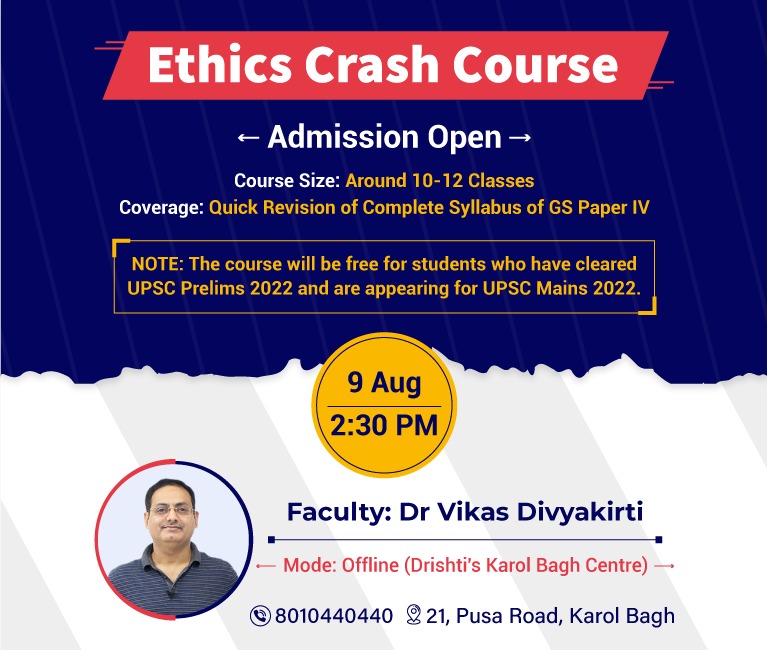
Science & Technology
Increasing Efficacy of Antibiotics
For Prelims: AMR
For Mains: AMR, Health
Why in News?
Recently, Scientists have developed a new approach to revitalise the efficacy of existing antibiotics.
What are the Findings?
- Scientists used antibiotics in combination with antibiotic adjuvants -- ingredients that can help counter resistance to existing antibiotics.
- Antibiotic adjuvants are nonantibiotic compounds that enhance antibiotic activity either by blocking resistance or by boosting the host response to infection.
- The Scientists incorporated cyclic hydrophobic moieties (portion of a molecule) in a triamine-containing compound, the adjuvants thus developed, weakly perturbed the membrane of bacteria.
- Resistance to antibiotics occurs through a variety of molecular mechanisms, including decreased drug permeability, active efflux, alteration or bypass of the drug target, production of antibiotic-modifying enzymes, and physiological states such as biofilms that are less susceptible to antibiotic activity.
- Triamine: A compound containing three amino groups.
- Hydrophobic Moieties: These are water fearful and they will not dissolve in water.
- Cyclic: A molecule is cyclic if its atoms form a ring structure.
- It resulted in countering of membrane-associated resistance elements like permeability barrier and expulsion of antibiotics by efflux pumps.
- The efflux pumps lower the intracellular antibiotic concentration, allowing bacteria to survive at higher antibiotic concentrations.
- When these adjuvants are used in combination with antibiotics that had been rendered ineffective due to such membrane-associated resistance elements, the antibiotics are potentiated, and the combination is effective in killing bacteria.
What is the significance of the Study?
- This strategy can combat the most critical group of bacteria enabling the existing antibiotic arsenal to be used again for complicated infections. It can help counter the rising menace of Antimicrobial Resistance (AMR).
- It can help strengthen the activity of obsolete antibiotics and bring them back into use for treating complicated infections.
What are Antibiotics and Drug Resistance?
- Antibiotics:
- Antibiotics are remarkable drugs capable of killing biological organisms in one’s body without harming the body.
- These are used for everything from preventing infections during surgeries to protecting cancer patients undergoing chemotherapy.
- India is the world’s largest consumer of antibiotics. India’s excessive antibiotic usage is leading to a powerful never before seen mutation within bacteria.
- Drug Resistance:
- Drug resistance happens when one overuses antibiotics in the treatment of humans, animals as well as plants.
- When a new antibiotic is introduced, it can have great, even lifesaving results but only for some time. After that, the bacteria adapts and gradually the antibiotics become less effective.
- Antibiotic resistance has the potential to affect people at any stage of life. When a person is infected with antibiotic resistant bacteria, not only the treatment of that patient becomes difficult, but antibiotic resistant bacteria may spread to other people as well.
- When antibiotics do not work, the situation may lead to more complicated diseases, the use of stronger and expensive drugs and gradually more deaths caused by bacterial infections.
- The spread of antibiotic resistance worldwide is undermining decades of progress in fighting bacterial infections.
- Drug resistance happens when one overuses antibiotics in the treatment of humans, animals as well as plants.
What are the Initiatives Related to Drug Resistance?
- India:
- National Programme on AMR containment: Launched in 2012. Under this programme, AMR Surveillance Network has been strengthened by establishing labs in State Medical College.
- National Action Plan on AMR: It focuses on One Health approach and was launched in April 2017 with the aim of involving various stakeholder ministries/departments.
- AMR Surveillance and Research Network (AMRSN): It was launched in 2013, to generate evidence and capture trends and patterns of drug resistant infections in the country.
- AMR Research & International Collaboration: Indian Council of Medical Research (ICMR) has taken initiatives to develop new drugs /medicines through international collaborations in order to strengthen medical research in AMR.
- Antibiotic Stewardship Program: ICMR has initiated antibiotic stewardship program (AMSP) on a pilot project across India to control misuse and overuse of antibiotics in hospital wards and ICUs.
- Global:
- World Antimicrobial Awareness Week (WAAW):
- Held annually since 2015, WAAW is a global campaign that aims to raise awareness of antimicrobial resistance worldwide and encourage best practices among the general public, health workers and policy makers to slow the development and spread of drug-resistant infections.
- The Global Antimicrobial Resistance and Use Surveillance System (GLASS):
- WHO launched the GLASS in 2015 to continue filling knowledge gaps and to inform strategies at all levels.
- GLASS has been conceived to progressively incorporate data from surveillance of AMR in humans, surveillance of the use of antimicrobial medicines, AMR in the food chain and in the environment.
- World Antimicrobial Awareness Week (WAAW):
UPSC Civil Services Examination, Previous Year Questions (PYQ)
Prelims
Q. Which of the following are the reasons for the occurrence of multi-drug resistance in microbial pathogens in India? (2019)
- Genetic predisposition of some people
- Taking incorrect doses of antibiotics to cure diseases
- Using antibiotics in livestock farming
- Multiple chronic diseases in some people
Select the correct answer using the code given below.
(a) 1 and 2
(b) 2 and 3 only
(c) 1, 3 and 4
(d) 2, 3 and 4
Ans: (b)
Mains
Q. Can overuse and free availability of antibiotics without Doctor’s prescription, be contributors to the emergence of drug-resistant diseasesin India? What are the available mechanismsfor monitoring and control? Critically discuss the various issues involved. (2014)


Important Facts For Prelims
Hatti Community
Why in News?
Recently, the Central Government is considering granting Tribal status to the Hatti Community of the Tans-Giri region of Himachal Pradesh’s Sirmaur district.
Who are the Hattis?
- The Hattis are a close-knit community that got their name from their tradition of selling homegrown vegetables, crops, meat, and wool, etc. at small markets called ‘haat’ in towns.
- Hatti men traditionally don a distinctive white headgear on ceremonial occasions.
- The Hatti homeland straddles the Himachal-Uttarakhand border in the basin of the Giri and Tons rivers, both tributaries of the Yamuna.
- The Tons marks the border between the two states.
- The Hattis who lives in the trans-Giri area in Himachal Pradesh and Jaunsar Bawar in Uttarakhand were once part of the royal estate of Sirmaur until Jaunsar Bawar’s separation in 1814.
- There are two Hatti clans, in Trans-Giri and Jaunsar Bawar, have similar traditions, and inter-marriages are common.
- However, a fairly rigid caste system operates in the community — the Bhat and Khash are upper castes, and the Badhois are below them, and inter-caste marriages have traditionally been discouraged.
- The Hattis are governed by a traditional council called ‘khumbli’ which, like the ‘khaps’ of Haryana, decides community matters.
- The Khumbli’s power has remained unchallenged despite the establishment of the Panchayati raj system.
- They have sizeable presence in about nine Assembly seats in the Sirmaur and Shimla regions.
- According to the 2011 Census of India, the total tribal population of Himachal Pradesh is 3,92,126, which is 5.7% of the total population of the state.
What are their Demands?
- Tribal Status:
- They are demanding Schedule Tribe status since 1967 when tribal status was accorded to people living in Jaunsar Bawar in Uttarakhand, which shares a border with the Sirmaur district.
- Issue:
- Due to topographical disadvantages, the Hattis living in the Kamrau, Sangrah, and Shilliai areas of Himachal Pradesh have lagged behind in both education and employment.
What is the Status of Scheduled Tribes in India?
- About:
- As per Census-1931, Schedule tribes are termed as "backward tribes” living in the "Excluded" and "Partially Excluded" areas. The Government of India Act of 1935 called for the first time for representatives of "backward tribes" in provincial assemblies.
- The Constitution does not define the criteria for recognition of Scheduled Tribes and hence the definition contained in 1931 Census was used in the initial years after independence.
- However, Article 366(25) of the Constitution only provides process to define Scheduled Tribes: “Scheduled Tribes means such tribes or tribal communities or parts of or groups within such tribes or tribal communities as are deemed under Article 342 to be Scheduled Tribes for the purposes of this Constitution.”
- 342(1): The President may with respect to any State or Union Territory, and where it is a State, after consultation with the Governor, by a public notification, specify the tribes or tribal communities or part of or groups within tribes or tribal communities as Scheduled Tribe in relation to that State or Union Territory.
- There are over 705 tribes which have been notified. The largest number of tribal communities are found in Odisha.
- The Fifth Schedule of the Constitution lays out provision for Administration and Control of Scheduled Areas and Scheduled Tribes in states other than Assam, Meghalaya, Tripura and Mizoram.
- The Sixth Schedule deals with the administration of the tribal areas in Assam, Meghalaya, Tripura and Mizoram.
- Legal Provisions:
- Protection of Civil Rights Act, 1955 against Untouchability.
- Scheduled Castes and the Scheduled Tribes (Prevention of Atrocities) Act, 1989
- Provisions of the Panchayats (Extension to the Scheduled Areas) Act, 1996
- Scheduled Tribes and Other Traditional Forest Dwellers (Recognition of Forest Rights) Act, 2006
- Related Initiatives:
- Related Committees:
- Xaxa Committee (2013)
- Bhuria Commission (2002-2004)
- Lokur Committee (1965)
UPSC Civil Services Examination Previous Year Question (PYQ)
Q With reference to ‘Stand Up India Scheme’, which of the following statements is/are correct? (2016)
- Its purpose is to promote entrepreneurship among SC/ST and women entrepreneurs.
- It provides for refinance through SIDBI.
Select the correct answer using the code given below:
(a) 1 only
(b) 2 only
(c) Both 1 and 2
(d) Neither 1 nor 2
Ans: C
EXP:
- Stand Up India Scheme was launched on 5th April 2016. It seeks to promote entrepreneurship among Scheduled Caste/Schedule Tribe and Women. Hence, statement 1 is correct.
- The Scheme is expected to benefit a large number of such entrepreneurs, as it is intended to facilitate at least two such projects per bank branch (Scheduled Commercial Bank) on an average one for each category of entrepreneur.
- Key Features:
- Composite loan between `10 lakh and upto `100 lakh, inclusive of working capital component for setting up any new enterprise.
- Debit Card (RuPay) for drawal of working capital.
- Credit history of the borrower to be developed.
- Refinance window through Small Industries Development Bank of India (SIDBI) with an initial amount of `10, 000 crore. Hence, statement 2 is correct.
- Creation of a corpus of `5,000 crore for credit guarantee through National Credit Guarantee Trustee Company (NCGTC).
- Handholding support for borrowers with comprehensive support for pre-loan training needs, facilitating loan, factoring, marketing, etc.
- Web Portal for online registration and support services. Therefore, option (c) is the correct answer.



-01 1.jpg)
